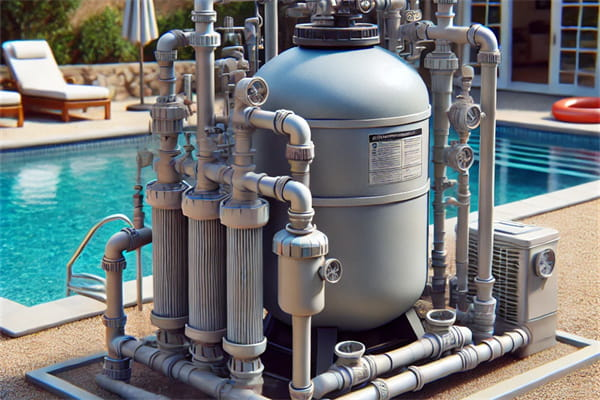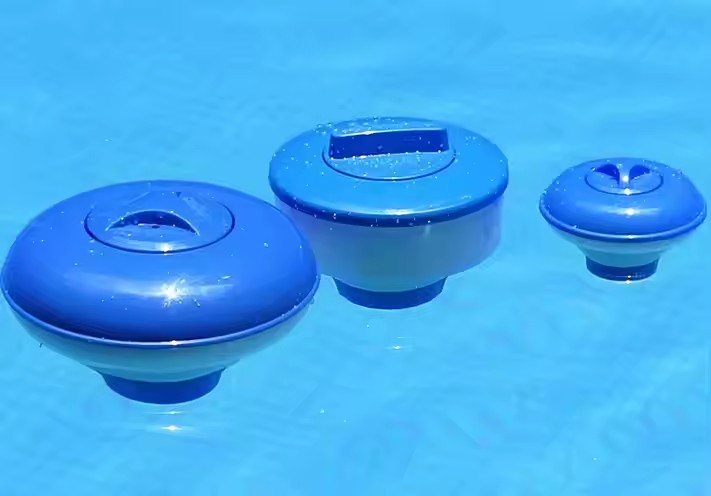When it comes to maintaining a sparkling clean swimming pool, one of the most critical components is the filtration system. Among the various options available, the pool sand filter stands out as a popular and effective choice for many pool owners. But how effective is a pool sand filter really? Let’s dive into the details to understand how these filters work, their efficiency, and the pros and cons they offer.

How a Sand Filter Works
The effectiveness of the filtration process in a pool sand filter is largely attributed to the sand’s unique properties and the way it interacts with the water. Let’s break down this process in more detail:
1. Sand Composition and Structure:
The sand used in pool filters is not ordinary beach sand; it’s specially graded and sized to maximize filtration efficiency. Typically, it is composed of sharp, angular grains that create numerous tiny gaps and passages. These gaps and passages are crucial as they act like a sieve, capturing particles as water passes through. For those looking to replace their sand or start fresh, knowing where to buy pool filter sand is essential for maintaining the filter’s effectiveness.
2. Multi-Layer Filtration:
As water enters the sand filter, it moves through multiple layers of sand. Each layer has a specific role in the filtration process. The top layer captures larger debris like leaves and insects, while the lower layers are responsible for trapping finer particles such as silt, dust, and microorganisms.
This layered approach ensures that a wide range of particle sizes, from large debris to tiny contaminants as small as 20-40 microns, are effectively captured.
3. Complex Pathways:
The design of the sand bed creates a complex and winding path for the water to navigate. Unlike straight paths, these winding routes increase the likelihood of particles being trapped at various points within the sand bed.
As water flows downward, it encounters resistance from the sand particles. This resistance forces the water to slow down and change direction multiple times, which enhances the likelihood of particles being captured.
4. Mechanical and Physical Filtration:
The sand filter relies on both mechanical and physical filtration. Mechanically, the sand physically blocks larger particles from passing through. Physically, it captures smaller particles through adhesion, where particles stick to the sand grains due to static and other forces.
The combined mechanical and physical filtration processes ensure a thorough cleaning of the pool water.
5. Self-Cleaning through Backwashing:
Over time, the trapped particles accumulate in the sand bed, reducing the filter’s efficiency. To maintain optimal performance, the sand filter is equipped with a backwashing feature.
During backwashing, the flow of water is reversed, and the trapped debris is flushed out of the filter. This process cleans the sand bed and restores its filtration efficiency.
6. Consistency in Filtration:
One of the key advantages of sand filters is their ability to maintain consistent filtration performance over extended periods. Even as the sand bed becomes clogged with debris, backwashing can quickly restore its effectiveness.
Regular backwashing, combined with periodic replacement of the sand (every 5-7 years), ensures that the filter continues to operate efficiently.
By understanding these detailed aspects of the filtration process, it’s clear why pool sand filters are a popular choice for maintaining clean and clear pool water. The multi-layered filtration, combined with the self-cleaning capability, ensures that even the tiniest particles are effectively removed, providing a safe and pleasant swimming environment.
Filtration Effectiveness and Efficiency
1.Types of Impurities Filtered:
A pool sand filter is capable of filtering out a variety of impurities, including:
Mud and Dirt: The sand filter excels at removing large debris such as mud and dirt, which can make the pool water cloudy.
Fine Particles and Silt: Smaller particles, such as silt and fine debris, are also effectively trapped by the sand.
Microorganisms: Some microorganisms, including bacteria and algae spores, can be filtered out, helping to keep the water hygienic.
2.Filtration Efficiency:
The efficiency of a pool sand filter is often highlighted by its ability to maintain water clarity. Studies and practical use show that sand filters can remove a significant percentage of impurities, making the water noticeably clearer and more transparent. Regular maintenance, particularly backwashing, ensures that the filter continues to perform optimally.
Water Clarity Improvement: After passing through a sand filter, pool water is significantly clearer. This improvement in clarity is a testament to the filter’s effectiveness in removing both visible and microscopic impurities.
Maintenance of Sand Media: While the sand itself can last for several years (typically 5-7), the efficiency of the filtration can be maintained through regular backwashing and occasional replacement of the sand.
Advantages and Disadvantages
1.Advantages:
Cost-Effectiveness: Compared to other filtration systems like cartridge or DE filters, sand filters are generally more affordable both in terms of initial cost and ongoing maintenance.
Ease of Maintenance: Backwashing a sand filter is a simple process that most pool owners can handle themselves. This convenience adds to the overall appeal of sand filters.
Longevity of Filter Media: Sand can last for several years before it needs replacement, making it a durable choice.
High Capacity: Sand filters are effective for large pools, as they can handle high volumes of water without compromising on filtration quality.
2.Disadvantages:
Less Effective for Fine Particles: While sand filters are great for larger debris, they are less effective at filtering out very fine particles compared to cartridge or DE filters. In such cases, using a filter cartridge might be more effective for finer filtration needs.
Water Waste from Backwashing: The backwashing process can waste a significant amount of water, which might be a concern in areas with water restrictions.
Potential for Channeling: Over time, water can create channels in the sand, bypassing the filtration process. This issue can be mitigated with regular maintenance and periodic replacement of the sand.
Conclusion
In conclusion, the pool sand filter is a highly effective and popular choice for many pool owners.


